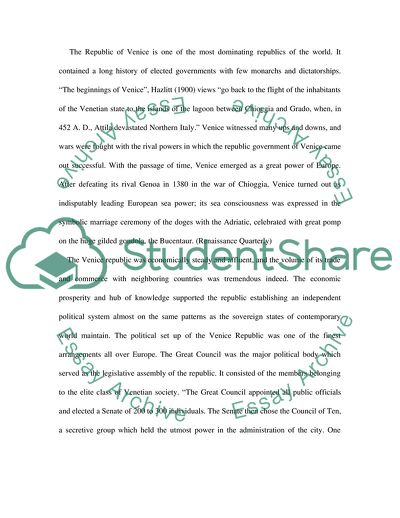Cite this document
(Venice Republic in 1297-1600 AD Essay Example | Topics and Well Written Essays - 1750 words, n.d.)
Venice Republic in 1297-1600 AD Essay Example | Topics and Well Written Essays - 1750 words. https://studentshare.org/history/1708294-the-government-system-in-the-republic-of-venice-between-the-years-1297-to-1600-ad
Venice Republic in 1297-1600 AD Essay Example | Topics and Well Written Essays - 1750 words. https://studentshare.org/history/1708294-the-government-system-in-the-republic-of-venice-between-the-years-1297-to-1600-ad
(Venice Republic in 1297-1600 AD Essay Example | Topics and Well Written Essays - 1750 Words)
Venice Republic in 1297-1600 AD Essay Example | Topics and Well Written Essays - 1750 Words. https://studentshare.org/history/1708294-the-government-system-in-the-republic-of-venice-between-the-years-1297-to-1600-ad.
Venice Republic in 1297-1600 AD Essay Example | Topics and Well Written Essays - 1750 Words. https://studentshare.org/history/1708294-the-government-system-in-the-republic-of-venice-between-the-years-1297-to-1600-ad.
“Venice Republic in 1297-1600 AD Essay Example | Topics and Well Written Essays - 1750 Words”. https://studentshare.org/history/1708294-the-government-system-in-the-republic-of-venice-between-the-years-1297-to-1600-ad.


